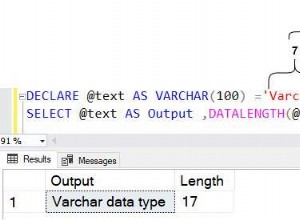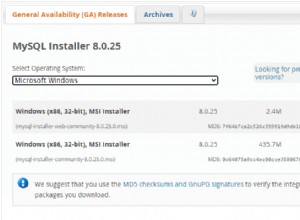Według MSDN :
EDYTUJ:
W celu odzyskania: Musisz złapać TransactionInDoubtException i napisz logikę kompensacji za pomocą apt checks.
using (var scope = new TransactionScope(TransactionScopeOption.Required, option))
{
try
{
Context.SaveEmail(_emailInfoList);
context.SaveSyncState(syncState);
scope.Complete();
return true;
}
catch (TransactionInDoubtException ex)
{
//check whether any one record from the batch has been partially committed . If committed then no need to reprocess this batch.
// transaction scope should be disposed first .
scope.Dispose();
if (IsReprocessingNeeded(syncState))
throw;
return true;
}
}
/// <returns></returns>
private bool IsReprocessingNeeded(SyncStateDataModal syncState)
{
while (true)
{
try
{
var id = _emailInfoList[0].ID;
bool isEmailsCommitted = Context.GetJournalEmail().FirstOrDefault(a => a.ID == id) != null;
if (!isEmailsCommitted)
return true;
if (context.EmailSynch(syncState.Id) == null)
{
context.SaveSyncState(syncState);
}
return false;
}
catch (Exception ex)
{
Thread.Sleep(TimeSpan.FromMinutes(AppConfiguration.RetryConnectionIntervalInMin));
}
}
}
ŹRÓDŁO Jaka jest ścieżka odzyskiwania dla TransactionInDoubtException?




